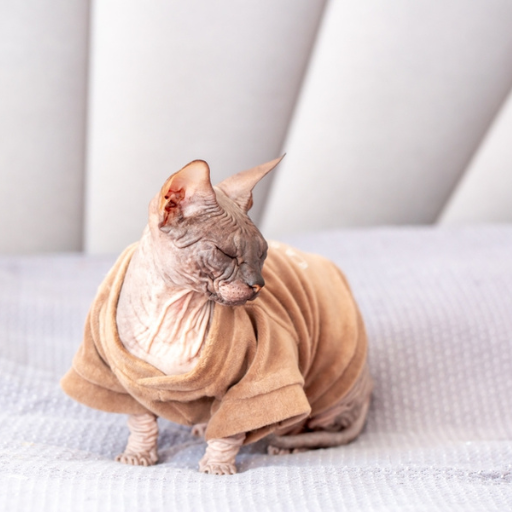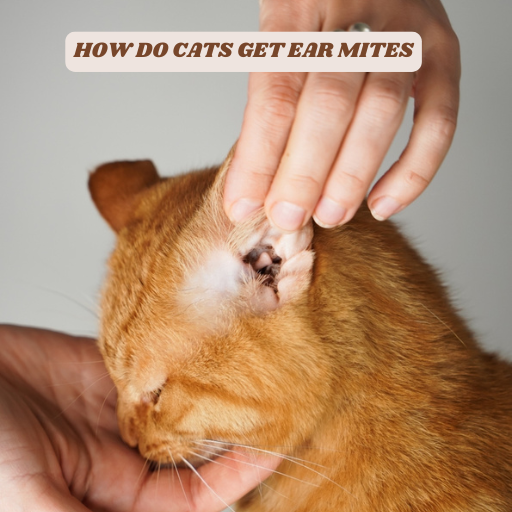How to Get Rid of Ear Mites in Cats
Ear mites are tiny parasites that can cause big problems for cats. These microscopic pests live in the ear canal, feeding off wax and oils, causing intense irritation and discomfort. If left untreated, ear mites can lead to more severe infections and permanent ear damage. However, with the right knowledge and treatments, you can eliminate ear mites and keep your cat happy and healthy. This article covers how to recognize ear mites, effective home treatments, and tips for preventing infestations.
What Are Ear Mites?

Ear mites, scientifically known as *Otodectescynotis*, are common parasites in cats. They’re tiny, spider-like creatures that live primarily in the ear canal, causing itching and inflammation. Ear mites are incredibly contagious, spreading quickly from one cat to another through close contact. Infected cats will scratch, shake their heads, and may even experience hearing loss if the infestation becomes severe.
Symptoms of Ear Mites in Cats
Knowing the symptoms can help you identify and address ear mites quickly. Here are common signs to watch for:
Excessive Scratching: Cats with ear mites often scratch around their ears and neck.
Frequent Head Shaking: Cats shake their heads vigorously in an attempt to dislodge the mites.
Dark, Crumbly Discharge: The inner ear may have dark brown or black discharge, resembling coffee grounds.
Strong Odor: Mite infestations sometimes lead to a distinct, foul smell in the ears.
Redness and Swelling: Infected ears may appear red and inflamed due to irritation.
Loss of Balance: In severe cases, ear mites can affect a cat’s balance, making them wobbly.
Causes of Ear Mite Infestations
Ear mites are usually transmitted through direct contact with an infected animal. Outdoor cats, in particular, are more likely to catch ear mites due to exposure to stray cats and other animals. Ear mites can also be spread indirectly through bedding or shared grooming tools.
How to Treat Ear Mites in Cats?
Treating ear mites promptly is essential for your cat’s comfort and health. Here are several effective methods:
- Clean the Cat’s Ears
Begin by cleaning your cat’s ears. This helps remove wax and debris, making it easier for treatments to work effectively.
Gently Wipe the Ears: Use a cotton ball or a soft cloth dampened with a cat-safe ear cleaner.
Avoid Cotton Swabs: Swabs can push debris further into the ear canal and cause injury.
- Use Ear Mite Treatments
Several over-the-counter ear mite treatments are safe and effective. Look for treatments containing pyrethrin or selamectin, which kill mites on contact.
Apply as Directed: Always follow the dosage instructions on the label.
Reapply if Necessary: Some treatments need a follow-up application to eliminate any lingering mites.
- Try Natural Remedies
If you prefer a natural approach, these remedies can also help get rid of ear mites in cats:
Olive Oil: A few drops of olive oil can suffocate the mites and ease irritation.
Coconut Oil: Coconut oil is a gentle option that helps soothe inflamed ears.
Aloe Vera: Aloe Vera gel can relieve itching and reduce inflammation.
- Prescription Medications
For severe cases, consult your vet. They may prescribe a stronger treatment, such as Revolution or Advantage Multi, which are effective at killing both mites and their eggs.
Tips for Preventing Ear Mite Infestations
Keeping your cat’s ears clean and monitoring their behavior can help prevent future infestations. Here are some preventive measures:
Regular Ear Checks: Inspect your cat’s ears weekly for signs of wax buildup or discharge.
Keep Bedding Clean: Wash your cat’s bedding regularly to prevent the spread of mites.
Limit Exposure to Infected Animals: If possible, keep your cat away from other animals with known infestations.
Routine Vet Visits: Regular vet check-ups can help catch ear mites early and prevent them from spreading.
Interesting Facts About Cats and Their Ears
Amazing Hearing: Cats have a hearing range between 45 to 64,000 Hz, allowing them to detect even the faintest sounds.
33 Ear Muscles: Each cat ear has 32 muscles, allowing for remarkable flexibility and movement.
Third Eyelid: Cats have a third eyelid (called a haw) that provides extra protection to their eyes and helps clean out debris.
Great Balance: A cat’s ear canal helps with balance, which is why severe ear infections or mite infestations can affect their coordination.
FAQs About Ear Mites in Cats
- Can humans get ear mites from cats?
No, ear mites do not usually transfer to humans. These parasites prefer animals, and human infections are extremely rare.
- How long does it take to get rid of ear mites in cats?
With treatment, it typically takes one to two weeks to completely eliminate ear mites. Severe cases may require longer treatment.
- Are ear mites in cats contagious to other pets?
Yes, ear mites can spread to other animals, including dogs and rabbits, through direct contact.
- How can I tell the difference between ear mites and a yeast infection?
Ear mites cause dark, coffee-ground-like discharge, while yeast infections tend to have a yellowish discharge and a stronger odor. A vet can perform an ear swab to determine the cause.
- Do all cats get ear mites?
No, not all cats will get ear mites, but outdoor cats or those in close contact with infected animals are more likely to be affected.
Bottom Line
Ear mites are common but treatable, and knowing how to detect and address them can prevent discomfort and more severe health issues for your cat. Regular ear care, prompt treatment, and preventive measures can ensure your cat remains happy, healthy, and free from ear mites.
With these steps, you can keep your cat safe from ear mites, ensuring they stay healthy and comfortable. Regular ear checks and early action are the best defenses against these tiny, irritating pests. Keep your furry friend’s ears clean, and they’ll thank you with more purrs and happy meows.




Post Comment